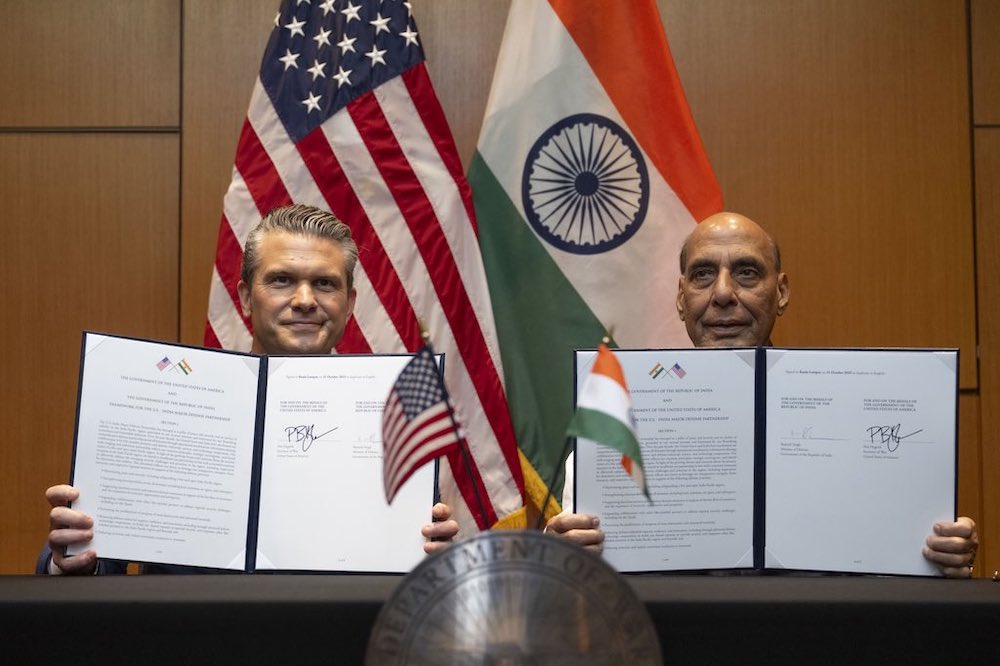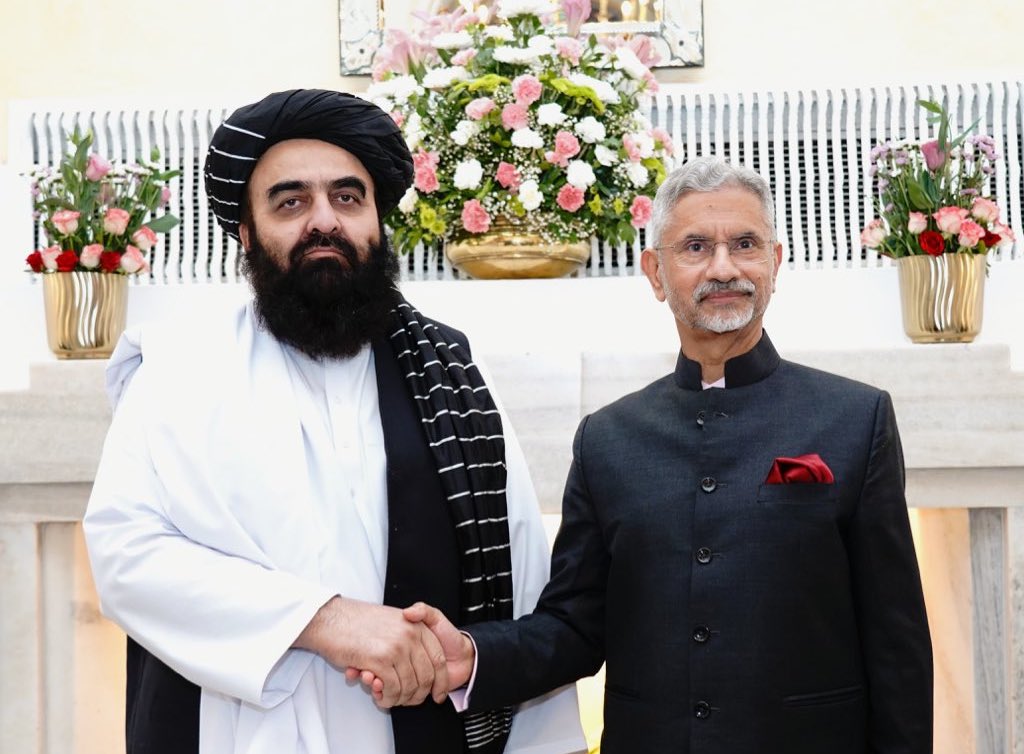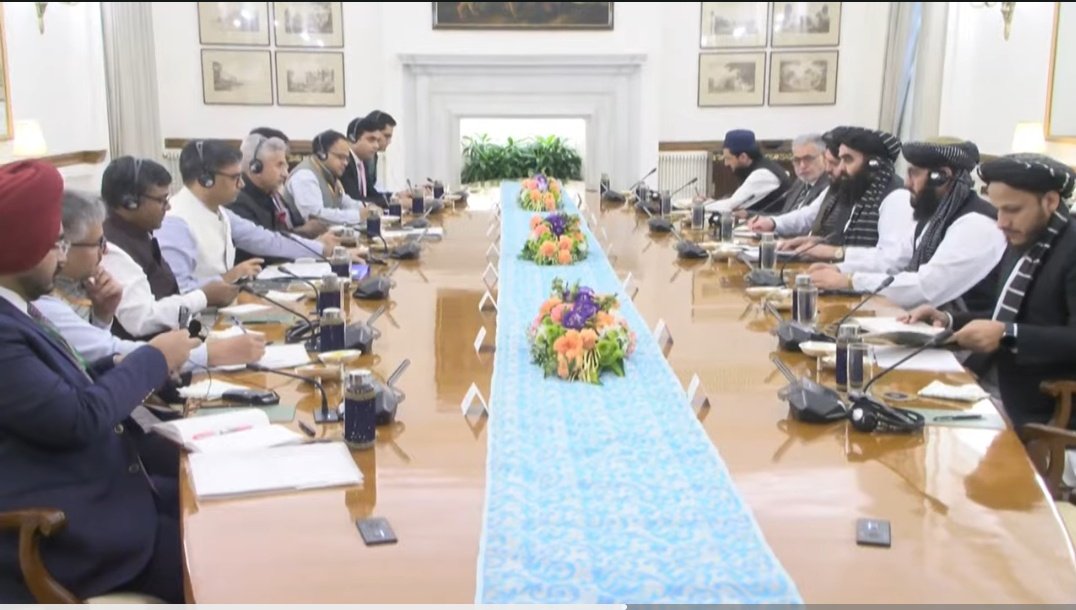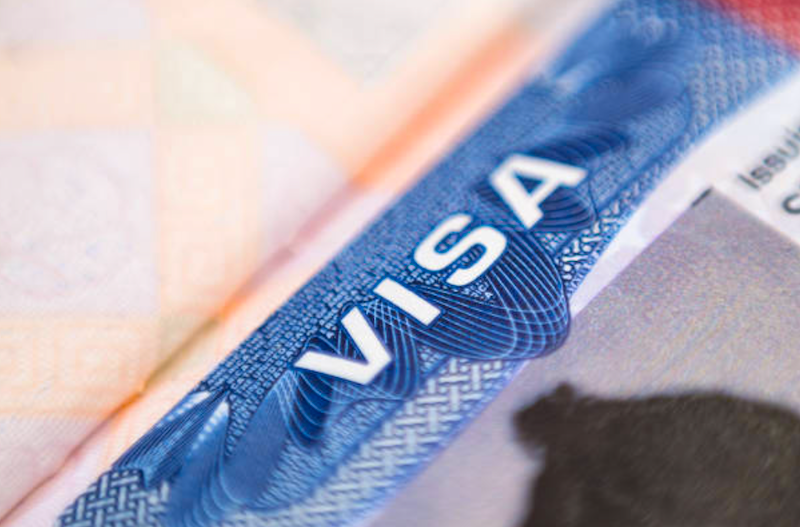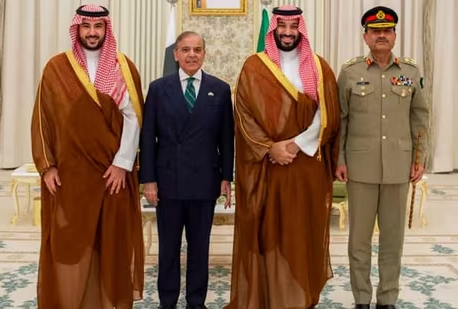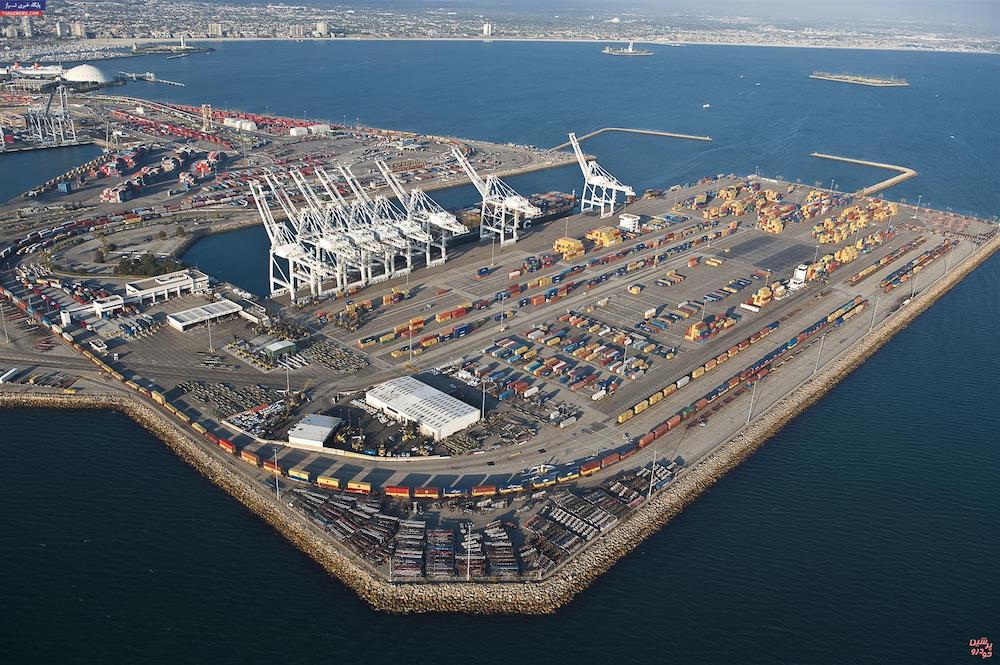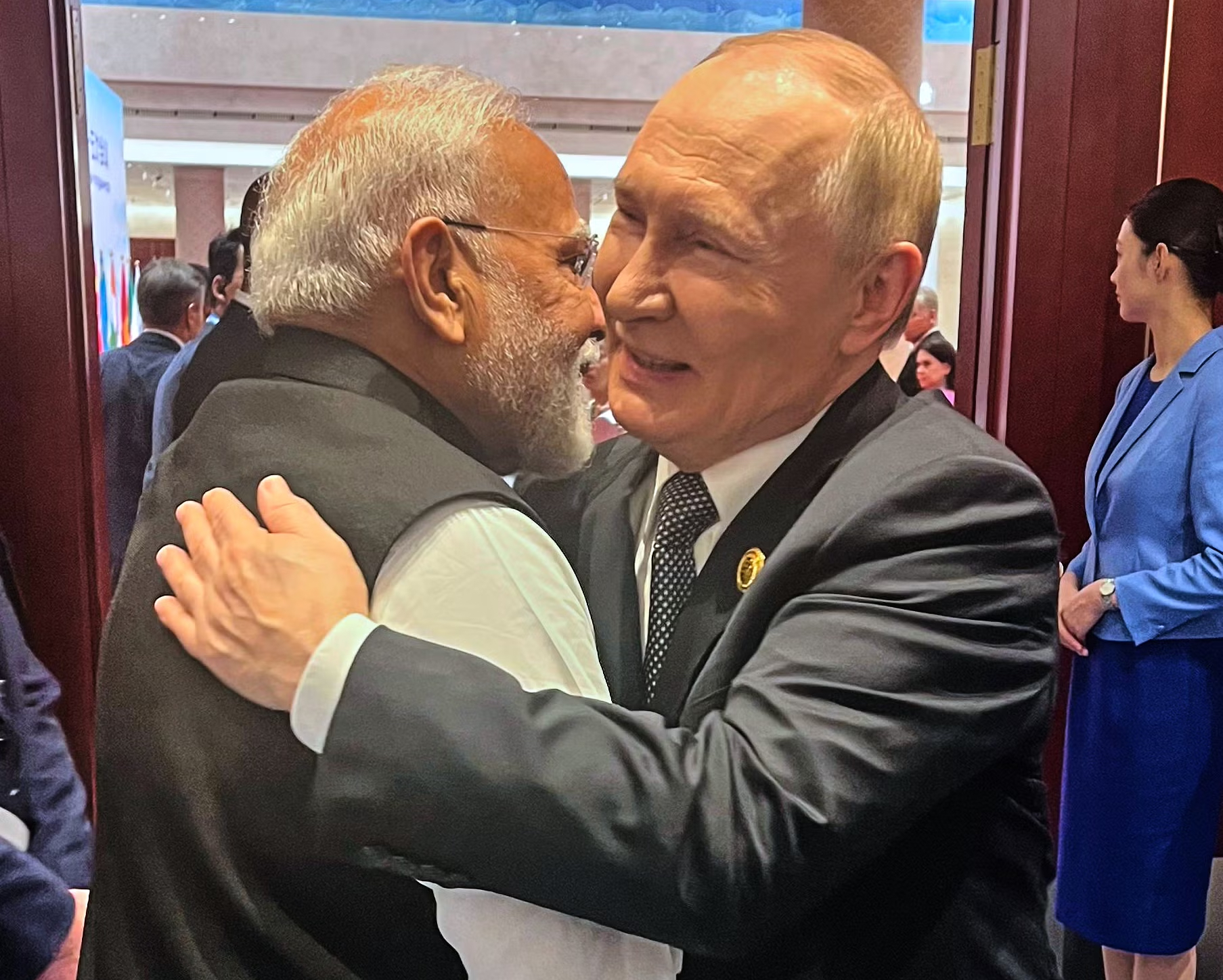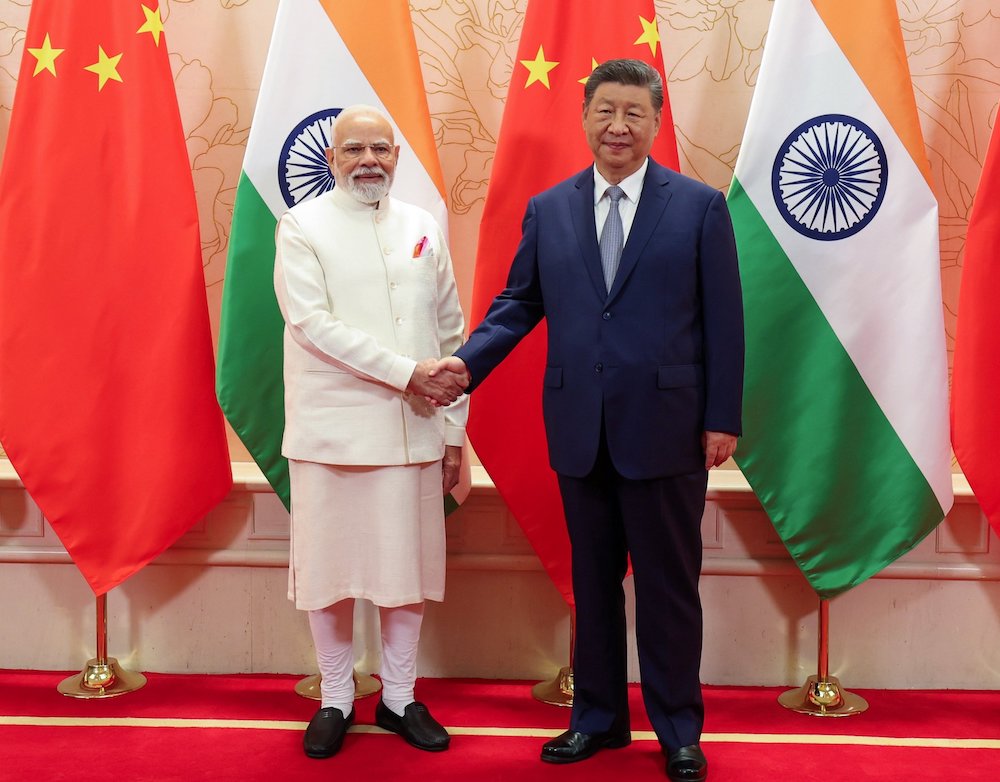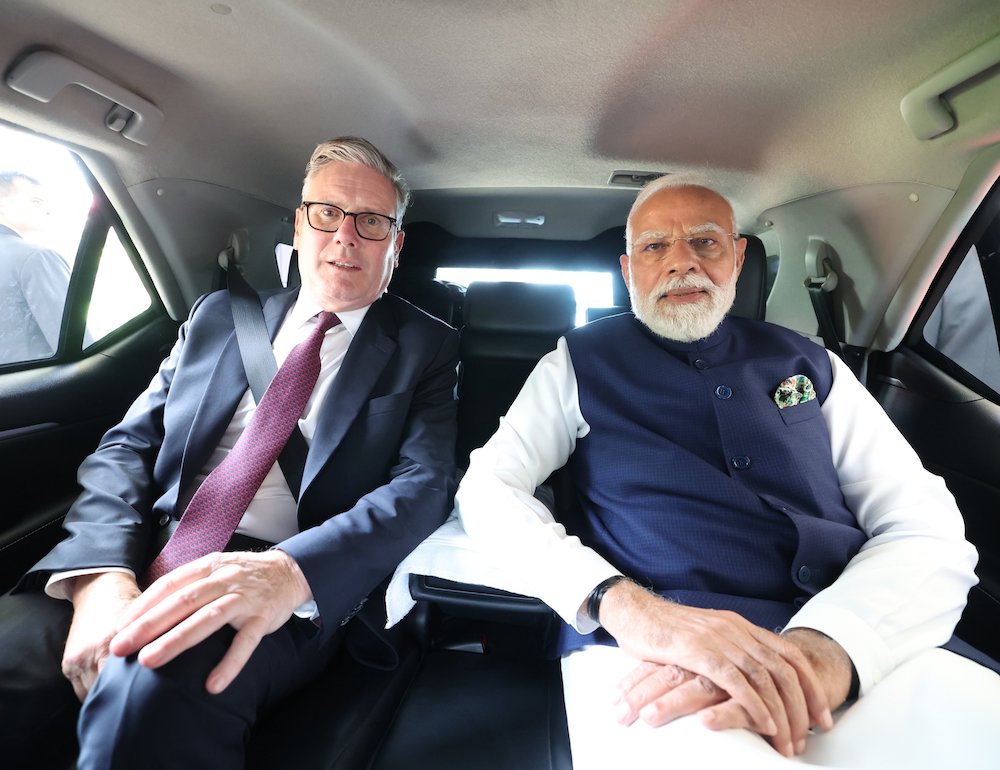 Kier Starmer (L) with Narendra Modi on their way to the Global Fintech Fest 2025 in Mumbai. (Photo: X/@narendramodi)
Kier Starmer (L) with Narendra Modi on their way to the Global Fintech Fest 2025 in Mumbai. (Photo: X/@narendramodi)
Mumbai/New Delhi: The British prime minister, Keir Starmer, concluded his first official visit to India with a significant package of bilateral investments and agreements that signal a maturing economic and strategic partnership between the two democracies. The October 8-9 visit, which brought 125 business leaders and university heads to Mumbai, generated over £5 billion ($6.72 billion, ₹563 crore) in combined investments and more than 10,600 jobs across both nations.
The visit’s timing – three months after Prime Minister Narendra Modi signed the India-UK Comprehensive Economic and Trade Agreement (CETA) in London – reflects the accelerated pace both governments are pursuing in operationalizing their strategic frameworks.
Investment flows in both directions
Indian companies committed £1.3 billion ($1.75 billion, ₹147 crore) in UK investments spanning engineering, technology, clean energy, advanced manufacturing, and creative industries. These commitments are expected to create approximately 6,900 jobs in Britain. In return, UK firms announced £3.6 billion ($4.84 billion, ₹407 crore) worth of investments into India’s economy, supporting thousands of British jobs domestically.
The bilateral investment announcements contrast with the more cautious approach both nations have historically taken toward economic engagement. The scale of commitments suggests confidence in the recently signed CETA, which eliminates tariffs on 99% of Indian exports to the UK and 89.5% of UK exports to India.
Current bilateral trade stands at approximately $56 billion (£41.7 billion, ₹4,704 crore). Modi expressed confidence at the CEO Forum that the target of doubling trade to $120 billion (£89.3 billion, ₹10,080 crore) by 2030 could be achieved ahead of schedule. “India’s dynamism and the UK’s expertise together create a unique synergy,” he noted, emphasizing the economic convergence driving the partnership.
Defence cooperation expands
The defence sector saw substantive movement with a £350 million ($468 million, ₹3,934 crore) agreement for the UK to supply lightweight multirole missiles to the Indian Army. Manufactured by Thales in Northern Ireland, the deal creates 700 UK jobs while establishing groundwork for broader weapons partnerships between the nations.
More significantly, both governments announced that Indian Air Force instructors would be integrated with the Royal Air Force, marking an unprecedented level of military training cooperation. They also established a Regional Maritime Security Centre of Excellence under the Indo-Pacific Oceans Initiative and finalized arrangements for developing maritime electric propulsion systems for Indian warships.
These agreements build on existing defence ties but represent a qualitative shift toward co-development and deeper operational integration. The partnership reflects India’s diversification of defence suppliers beyond its traditional Russian dependence, while offering Britain a foothold in India’s substantial military modernization programme.
British universities eye Indian expansion
Nine British universities received approval to establish campuses in India, making the UK India’s leading international provider of higher education. The University of Southampton has already opened its Gurugram campus and enrolled its first cohort. The universities of Lancaster and Surrey received the latest approvals for campuses in Bengaluru and GIFT City respectively.
Other institutions planning Indian campuses include the universities of York, Aberdeen, Bristol, Liverpool, Queen’s University Belfast, and Coventry. This expansion addresses India’s massive higher education demand – 40 million current university students with 70 million places needed by 2035.
The university expansion represents a commercial opportunity for British institutions facing domestic financial pressures, while offering Indian students access to UK qualifications without overseas relocation costs. However, questions remain about quality assurance, regulatory oversight, and whether these campuses will replicate the full British university experience or operate as credential-issuing franchises.
Technology partnerships take shape
Building on the Technology Security Initiative established in 2024, both countries announced several joint ventures. The India-UK Connectivity and Innovation Centre received £24 million ($32.2 million, ₹270 crore) for 6G networks and telecom cybersecurity. The India-UK Joint Centre for AI will promote ethical artificial intelligence applications in health, climate, and fintech sectors.
The leaders also launched the Critical Minerals Collaboration Guild and Phase 2 of the Critical Minerals Observatory, featuring a satellite campus at IIT-ISM Dhanbad. These initiatives aim to strengthen supply chains for green technologies and reduce dependency on single-source suppliers – a clear reference to China’s dominance in critical mineral processing.
At the Global Fintech Fest 2025 in Mumbai, both prime ministers emphasized financial technology cooperation. Modi highlighted India’s transformation into “one of the world’s most technologically inclusive societies,” noting that India processes 50% of the world’s real-time digital transactions through the Unified Payments Interface. Starmer praised the festival as evidence of the UK-India partnership’s potential to strengthen global financial infrastructure.
Climate cooperation with caveats
The Climate Technology Startup Fund – a joint investment between the UK Government and State Bank of India – will support clean energy innovation. The India-UK Offshore Wind Taskforce aims to accelerate renewable energy development and strengthen green technology supply chains.
Under the India-UK Vision 2035 framework, both countries committed to deeper collaboration on energy storage, grid transformation, and nuclear technologies, including small modular reactors. These align with India’s target of 500GW non-fossil fuel capacity by 2030 and net-zero emissions by 2070.
However, Starmer urged greater cooperation on moving away from fossil fuel dependence – an implicit criticism of India’s continued Russian oil imports. Modi reiterated India’s position supporting “all efforts to restore peace through dialogue and diplomacy” regarding Ukraine, while maintaining strategic autonomy in energy procurement decisions.
Geopolitical positioning
Modi characterized the India-UK partnership as “an important pillar of global stability and economic progress” in an era of international uncertainty. This framing reflects both nations’ recognition of their partnership’s broader geopolitical significance amid shifting international alliances.
For Britain, the relationship represents a key post-Brexit partnership that offers economic opportunities while strengthening ties with the Indo-Pacific region. For India, it provides diversification from traditional partnerships while enhancing technological and defence capabilities.
Both leaders discussed the Russia-Ukraine conflict and Middle East tensions, though their statements revealed careful diplomatic balancing. While Britain seeks stronger Indian alignment on global security issues, India maintains its non-aligned tradition and prioritizes relationships based on national interest rather than ideological solidarity.
Implementation challenges ahead
The visit’s success in generating immediate outcomes while establishing long-term frameworks demonstrates the partnership’s potential. However, translating announcements into operational realities will require sustained political commitment, bureaucratic coordination, and private sector confidence.
The CETA’s implementation will test both governments’ ability to manage regulatory differences, resolve disputes, and ensure promised market access materializes. The defence partnerships require navigating India’s complex procurement processes and Britain’s technology transfer constraints. The university expansions must address quality concerns while respecting Indian regulatory requirements.
The Vision 2035 roadmap provides an ambitious framework spanning trade, technology, defence, climate, and education. Its success depends on whether both nations can maintain political momentum through electoral cycles, economic fluctuations, and shifting geopolitical circumstances.
Starmer’s visit, carrying Britain’s largest-ever trade delegation to India, signals the seriousness with which London views the relationship. Whether this translates into a genuinely transformative partnership or remains another round of promising announcements will become clear in the implementation phase ahead.
The partnership’s trajectory suggests both nations recognize that their collaboration extends beyond bilateral benefits to contribute to global stability and sustainable development. As India emerges as the world’s third-largest economy and Britain seeks to establish new post-Brexit partnerships, their strategic alliance positions both countries to address contemporary challenges while pursuing mutual prosperity.
Yet the relationship remains asymmetric. Britain needs India economically more than India needs Britain. India’s economy is growing rapidly while Britain’s struggles with post-Brexit adjustments and sluggish growth. This reality shapes negotiations and implementation, with India holding stronger cards in determining the partnership’s ultimate contours.
The coming months will reveal whether the announcements translate into tangible outcomes or join the lengthy list of diplomatic communiqués that promised more than they delivered.

